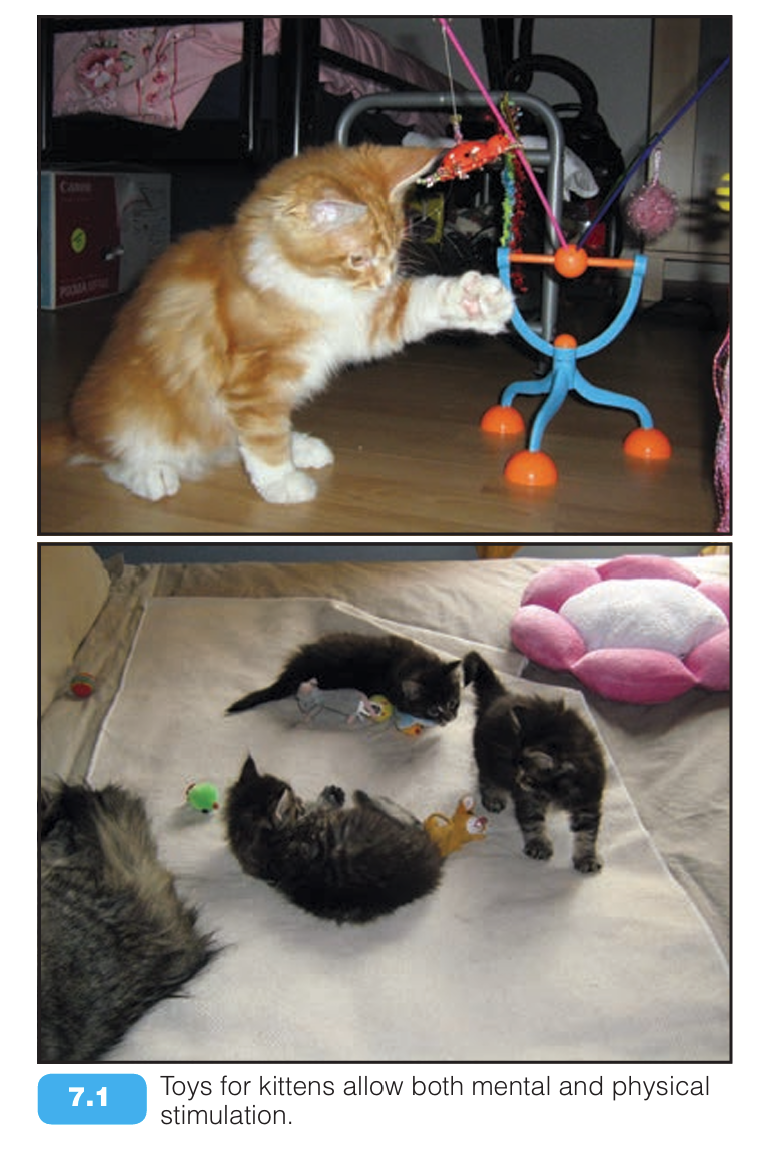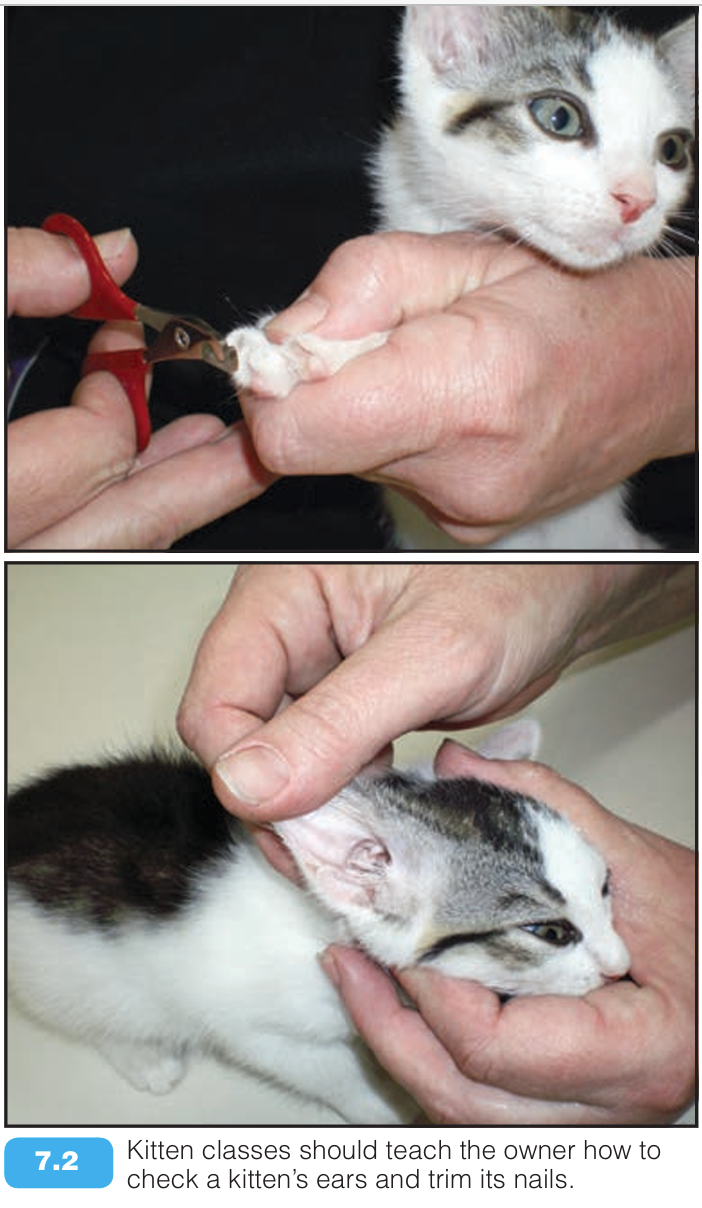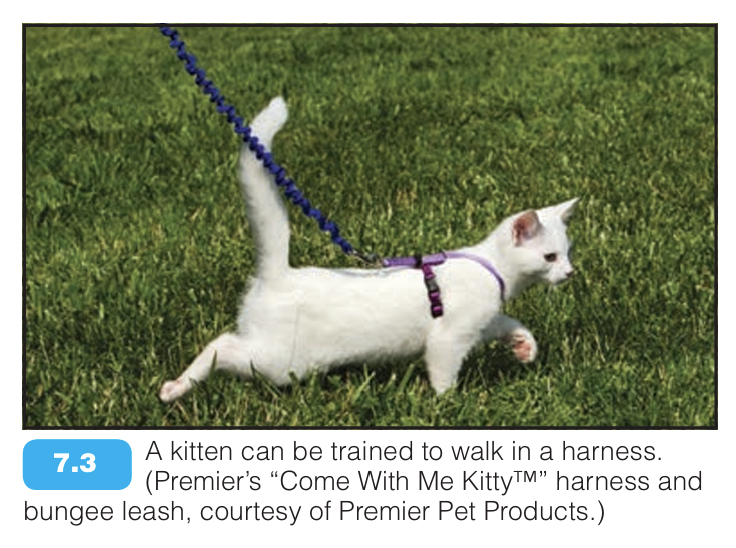Cat’s behavioural development

BEHAVIOUR SERIES - Understand your cat’s behavioural development
Behaviour series is to help owners to understand why the cat behaves in the way it does and to help them to manage, modify or accept the behaviours. Many feline behaviours that are problematic for owners are in fact normal behaviours. Most people view feline behaviour anthropocentrically and have unrealistic expectations of their cat. This leads to misunderstanding of the motivation for the behaviour and to the breakdown of the human–cat bond. Owners who understand their cat’s behavioural development, its needs and feline ways of communi cation are better able to prevent some behaviour problems (or problem behaviours) from occurring.
Selection
Selection of the most appropriate pet for the house hold is the first step in the prevention of problems. This involves helping owners to decide whether a cat is the most appropriate choice of pet and also providing advice on selection of the breed, gender, age and so on.
To increase the likelihood that the kitten will develop normally into a well behaved cat that is suitable for the average cat owner, the selection of a kitten for the family should be based on temperament and good health, not appearance – even if it is proposed to show or breed the cat.
Studies have indicated that the temperament of the father has a large influence in determining the temperament of the kitten as far as boldness and timidity in its response to humans are concerned. This is not to say that the queen may not have a similar influence, but it is easier to isolate and identify the influence of the father experimentally (he has no input after mating) and there have not been any studies to determine the influence of the queen. Nonetheless, an outgoing and friendly queen will teach the kittens how to behave by her example as well. Ideally a prospective kitten owner should meet and interact with the tom and the queen, as well as their siblings and previous issue. However, this opportunity is rarely available.
The ideal time to home a kitten is after its first vaccinations at around 7–9 weeks of age (Bradshaw, 1992). If kittens are not homed until after this age, or if they go to homes where they may not experience a wide variety of situations, special measures may be necessary to ensure adequate socialization.
2. Socialization
Pets that fit into human society need to be socialized. Socialization is the term used for the process by which individuals learn and perform behaviours expected of them by society. In the case of dogs and cats, socialization is a special learning process whereby the puppy or kitten learns to accept the close proximity of members of its own species as well as members of other species.
In the first 4 weeks of life it is essential that kittens have social contact with the queen. If this is prevented a variety of behavioural, emotional and physical abnormalities may develop. From studies it is now known that cats that have been isolated during the sensitive socialization period are more likely to be hyperactive, antisocial and fearful of people and other cats (Bradshaw, 1992). They can also be slow to learn even simple associations, such as the location of food. Handling kittens for as little as 20 minutes a day can help to substitute for some of the stimulation provided by the queen (Bradshaw, 1992), but anecdotal evidence in hand-raised kittens suggests that they may have difficulty controlling bite strength and sheathing of claws, though the relative importance of specific factors remains unknown. Lack of socialization, as may be shown by inappropriate responses to people or other animals, is one of the many issues that lead to abandonment of pets.
To develop into normal, friendly and confident adults, kittens need regular handling and to be exposed to many novel situations in an unthreatening manner during the sensitive socialization period. Kittens that do not have the opportunity to interact with other cats and humans during the socialization period may later exhibit undesirable behavioural responses, such as aggression or avoidance, to other cats or people, or abnormal ‘bonding’ to people.
3. Stimulation
During the socialization period it is important to expose the young kitten to as many new things as possible in an unthreatening way. The kitten needs to play and have contact with people other than just the immediate family and it should be exposed to children as well as adults.

Through play, kittens develop confidence and learn how to interact and communicate. They learn body language and communication skills. Play behaviour is affected by the time of weaning. When development proceeds normally, weaned kittens show a reduction in social play and an increase in object play at around 8 weeks of age. Studies have shown that kittens that are weaned early show an earlier increase in the frequency of object play (Martin and Bateson, 1988).
Exercising the mind as well as the body is an important aspect of keeping cats healthy and looking after their welfare. Indoor cats require more active enrichment, which means providing them with mental as well as physical stimulation. Ways to provide complexity and variety should include the provision of suitable toys (Figure 7.1) and activities that allow the kitten to use its senses of sight, hearing, smell, taste and touch. Toys need to be changed at regular inter vals, even daily, for the kitten or cat to maintain inter est. Additionally, the kitten may first need to be taught how to play, and then encouraged to play with toys.
Foraging devices that allow exploratory activity, simulate normal predatory behaviours and stimulate the senses are important. Hiding dry food in different places around the house and letting the kitten ‘hunt’ for dinner provides excellent mental as well as physical exercise.
An indoor garden filled with grass, catnip or catmint can provide sensory stimulation as well as tactile stimulation, though some cats become over-aroused by catnip and can appear aggressive to owners who interact inappropriately with them at this time. Plants also provide fibre and may prevent the cat eating potentially toxic indoor plants.
Cat flaps can provide a degree of freedom by allowing access to a safe outside enclosure for visual and olfactory stimulation. (See Chapter 4 for additional information on enrichment.)
4. Kitten socialization and training
Setting boundaries for acceptable and unacceptable behaviour as soon as a kitten has entered its new home is important. Rewarding appropriate behaviour is the key to a well mannered cat. Behaviours that are unacceptable to the owner should be ignored and more acceptable behaviours substituted by using rewards rather than punishment. Behaviours that might be cute when a kitten is little will not necessarily be acceptable when a fully grown adult cat expresses the same behaviour. It is important to make owners aware that potentially problematic behaviour does not disappear on its own, but it may become more noticeable as the cat grows up.
The classes allow kittens to explore novel environments, learn to accept other kittens, play with toys and develop confidence in new surroundings. Hand-raised kittens or kittens from small litters appear to benefit especially from these social interactions. The classes also aim to teach owners about normal feline behaviour so that behaviours that may be problematic are prevented, or at least understood. The classes focus on how to interact appropriately and play with a kitten.
5. Class structure
Explaining the principles of encouraging appro priate behaviours (reward appropriate behaviour and ignore inappropriate behaviour) is an important part of the education process. Handouts covering the problems that have been discussed, such as litter training, biting and scratching, should be distributed. Many practices have developed their own handouts or use or adapt the many that appear in textbooks.
Kitten class one

Kittens should arrive in cat carriers or cages and owners should not let them out until asked by the class instructor. In class one, owners can be shown how to handle kittens appropriately and how to massage them to relax them. Kittens need to learn to accept the attention that people want to give them, such as being picked up, stroked or patted for long periods of time, and how to play appropriately. They can be taught to come and sit on cue, using food rewards and praise.
Owners need to be taught that cats will behave like cats. In many multi-cat households, although the cats may accept living together they may not be part of a bonded group. This means providing separate places for the cats to eat, rest, play and eliminate. Cats do not share and they do not queue. When they want to eliminate, they want to do it immediately. This means providing enough litter trays for the number of cats (and one to spare), as they will not wait until a tray is free.
Kitten class two
In this class owners can be shown how to groom their kitten, give medications, trim the nails and check the ears (Figure 7.2). Kittens can also be taught to walk on a lead or accept a harness.

Further reading:
Horwitz, D. F., & Mills, D. S. (Eds.). (2009). BSAVA Manual of Canine and Feline Behavioural Medicine (2nd ed.). British Small Animal Veterinary Association.
- American Association of Feline Practitioners (2004) Feline Behavior Guidelines. AAFP, Hilsborough, New Jersey [obtainable online from www.aafponline.org]
- Australian Companion Animal Council (2006) BIS Shrapnel report: Contribution of the Pet Care Industry to the Australian Economy, 6th edn. ACAC, Sydney
- Beaver BV (2003) Feline Behavior: a Guide for Veterinarians. WB Saunders, Philadelphia
- Bowen J and Heath S (2005) Behaviour Problems in Small Animals: Practical Advice for the Veterinary Team. Elsevier Saunders, Edinburgh
- Bradshaw JWS (1992) The Behaviour of the Domestic Cat. CAB International, Wallingford
- Houpt KA (1998) Domestic Animal Behavior, 3rd edn. Iowa State University Press, Ames, Iowa Landsberg G, Hunthausen W and Ackerman L (2003) Handbook of Behaviour Problems of the Dog and Cat. Butterworth-Heinemann, Oxford
- Martin P and Bateson P (1988) Behavioural development in the cat. In: The Domestic Cat: the Biology of its Behaviour, ed. DC Turner and P Bateson, pp. 9–22. Cambridge University Press, Cambridge
- Overall KL (1997) Clinical Behavioral Medicine for Small Animals. Mosby, St Louis, Missouri
- Robinson I (1992) Behavioural development of the cat. In: The Waltham Book of Dog and Cat Behaviour, ed. C Thorne, pp. 53–64. Pergamon Press, Oxford
- Salman M, Hutchison J, Ruch-Gaille R et al. (2000) Behavioral reasons for relinquishment of dogs and cats to 12 shelters. Journal of Applied Animal Welfare Science 3, 93–106
- Seksel K (2001) Training Your Cat. Hyland House, Flemington, Melbourne, Australia
- Seksel K (2004) Prevention of future behaviour problems: kitten classes. European Journal of Companion Animal Practice 14, 101–104
- Seksel K (2008) Preventing behavior problems in puppies and kittens. Veterinary Clinics of North America: Small Animal Practice 38, 971–982